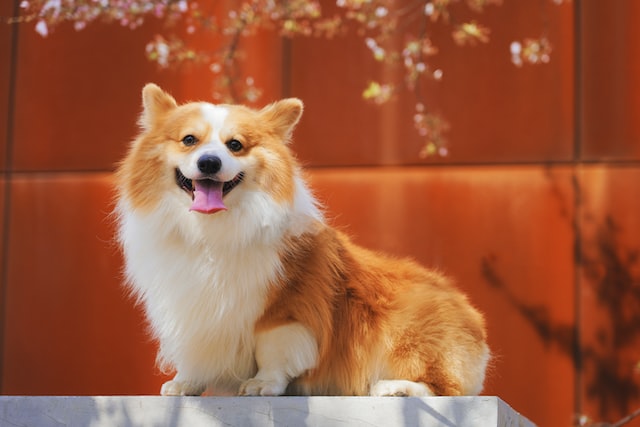Dog lovers know that owning a pet is a rewarding experience, but some breeds come with a hefty price tag. The costs associated with these breeds are often due to their rarity, pedigree, and the significant expenses related to breeding and healthcare. Here’s an in-depth look at the 10 most expensive dog breeds in the world.
Tibetan Mastiff
- Price: $2,000 – $10,000
- Description: The Tibetan Mastiff is a large, powerful dog originally used by nomadic cultures in Tibet, China, Nepal, and India to protect sheep from predators. Known for its impressive size and thick double coat, this breed can weigh up to 150 pounds or more. The breed’s rarity and the costs of importing them from their native regions contribute to their high price. In 2014, a Tibetan Mastiff was sold for a staggering $1.9 million, setting a record for the most expensive dog ever sold.
Chow Chow
- Price: $3,000 – $8,500
- Description: The Chow Chow is one of the oldest dog breeds, originating from northern China. Known for their lion-like mane, blue-black tongue, and regal demeanor, Chow Chows are independent and aloof but can be incredibly loyal to their families. Their grooming needs, health issues like hip dysplasia and entropion, and the need for socialization training all add to the cost of owning a Chow Chow.
Samoyed
- Price: $4,000 – $11,000
- Description: The Samoyed is a beautiful, fluffy breed known for its friendly and gentle nature. Originating from Siberia, these dogs were bred to herd reindeer and pull sleds. They have a thick, white double coat that requires regular grooming. Their rarity and the expenses related to maintaining their health and grooming standards make them one of the most expensive breeds.
Pharaoh Hound
- Price: $3,000 – $7,000
- Description: The Pharaoh Hound is one of the oldest domesticated dog breeds, dating back to ancient Egypt. Known for their elegant, slender build and keen hunting instincts, these dogs are intelligent and active. Their rarity, combined with their unique appearance and history, contributes to their high price.
Akita
- Price: $1,500 – $4,500
- Description: The Akita is a large, powerful breed from Japan, known for its loyalty and courage. There are two types of Akitas: the Japanese Akita Inu and the American Akita. Both require extensive training and socialization. Health issues like hip dysplasia and autoimmune disorders can add to the cost of ownership.
Rottweiler
- Price: $2,000 – $8,000
- Description: Rottweilers are known for their strength, loyalty, and protective nature. Originating from Germany, they were initially bred to herd livestock and pull carts. While they are popular as family pets and guard dogs, high-quality Rottweilers with superior pedigrees can be quite expensive. Their potential health issues, such as hip dysplasia and heart problems, also contribute to their cost.
Lowchen
- Price: $5,000 – $8,000
- Description: The Lowchen, or “Little Lion Dog,” is a small, rare breed that has been popular among European nobility for centuries. Known for its distinctive lion-like haircut and cheerful personality, the Lowchen is a companion dog that requires minimal exercise but regular grooming. Their rarity and the costs associated with breeding contribute to their high price.
French Bulldog
- Price: $1,500 – $8,000
- Description: French Bulldogs are small, muscular dogs with a distinctive “bat ear” appearance. They are known for their friendly and affectionate nature, making them popular pets. However, their high demand, combined with breeding difficulties (many require cesarean sections), leads to their high price. Potential health issues like brachycephalic syndrome and hip dysplasia can also add to the cost.
Cavalier King Charles Spaniel
- Price: $2,500 – $4,500
- Description: The Cavalier King Charles Spaniel is a small, elegant breed known for its friendly and affectionate nature. Originating from the UK, these dogs were bred as companion animals for royalty. Their gentle temperament and beautiful appearance make them popular pets. However, potential health issues such as heart problems and syringomyelia contribute to their high cost.
Bernese Mountain Dog
- Price: $2,500 – $10,000
- Description: The Bernese Mountain Dog is a large, sturdy breed originating from the Swiss Alps. Known for their friendly and gentle nature, these dogs were originally used to pull carts and herd livestock. Their thick, tri-colored coat requires regular grooming. Health issues like hip dysplasia, elbow dysplasia, and cancer contribute to their high cost of ownership.
Owning one of the most expensive dog breeds comes with a significant financial commitment, not just in terms of the initial purchase price but also the ongoing costs related to healthcare, grooming, and training. However, for many dog lovers, the joy and companionship provided by these unique and special breeds are well worth the investment. Whether you’re drawn to the regal Chow Chow or the affectionate Cavalier King Charles Spaniel, each of these breeds offers something extraordinary that justifies their price tag.


